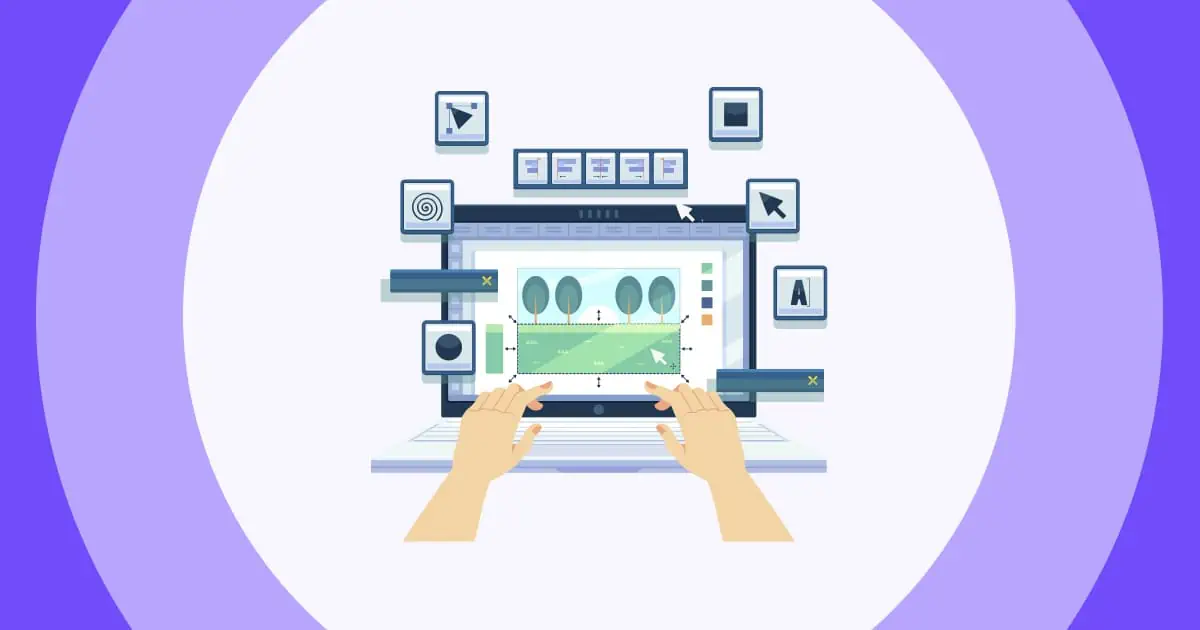Measuring how people feel about something isn't always straightforward. After all, how do you put a number on an emotion or an opinion? That's where the Semantic Differential Scale comes into play. In this blog post, we're going to explore the Semantic Differential Scale, its different kinds, some examples, and how it's used. Let's dive into how we measure things we can't easily see or touch, and learn how to understand our thoughts and feelings clearly and measurably.
Table Of Contents
- What Is Semantic Differential Scale?
- Semantic Differential Scale vs. Likert Scales
- Types Of Semantic Differential Scale
- Examples Of Semantic Differential Scale
- Enhancing Survey Insights with AhaSlides' Rating Scale
- Bottom Line
What Is Semantic Differential Scale?
The Semantic Differential Scale is a type of survey or questionnaire tool that measures people's attitudes, opinions, or perceptions toward a specific subject, concept, or object. It was developed in the 1950s by psychologist Charles E. Osgood and his colleagues to capture the connotative meaning of psychological concepts.
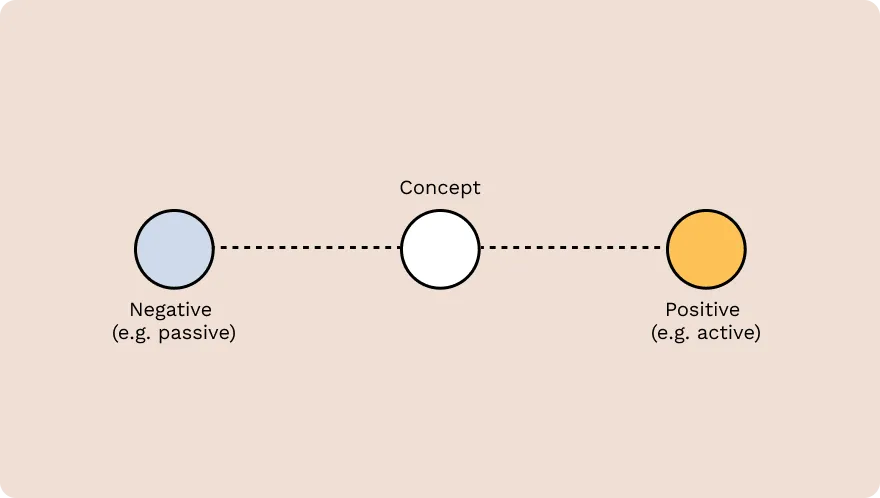
This scale involves asking respondents to rate a concept on a series of bipolar adjectives (opposite pairs), such as "good-bad", "happy-sad”, or "effective-ineffective." These pairs are typically anchored at the ends of a 5- to 7-point scale. The space between these opposites allows respondents to express the intensity of their feelings or perceptions about the subject being evaluated.
Researchers can use ratings to create a space that shows how people feel about a concept. This space has different emotional or connotative dimensions.
Semantic Differential Scale vs. Likert Scales
Semantic Differential Scales and Likert Scales are both widely used in surveys and research to measure attitudes, opinions, and perceptions. Although they share some similarities, they have distinct characteristics and applications. Understanding the differences between them can help in selecting the most appropriate tool for a given research question or survey need.
| Feature | Semantic Differential | Likert Scale |
| Nature | Measures meaning/connotation of concepts | Measures agreement/disagreement with statements |
| Structure | Bipolar adjective pairs (e.g., happy-sad) | 5-7 point scale (strongly agree - strongly disagree) |
| Focus | Emotional perceptions and nuances | Opinions and beliefs about specific statements |
| Applications | Brand image, product experience, user perception | Customer satisfaction, employee engagement, risk perception |
| Response Options | Choose between opposites | Choose the level of agreement |
| Analysis & Interpretation | Multi-dimensional view of attitudes | Levels of agreement/frequency of viewpoint |
| Strengths | Captures subtle nuances, good for qualitative analysis | Easy to use & interpret, versatile |
| Weaknesses | Subjective interpretation is time-consuming | Limited to agreement/disagreement, may miss complex emotions |
The analysis of Semantic Differential Scales can provide a multi-dimensional view of attitudes, while Likert Scale analysis typically focuses on levels of agreement or frequency of a particular viewpoint.
Types Of Semantic Differential Scale
Here are some types or variations of the Semantic Differential Scale that are commonly used:
1. Standard Semantic Differential Scale
This is the classic form of the scale, featuring bipolar adjectives at both ends of a 5- to 7-point scale. Respondents indicate their perceptions or feelings towards the concept by selecting a point on the scale that corresponds to their attitude.
Application: Widely used in psychology, marketing, and social sciences to measure the connotative meaning of objects, ideas, or brands.
2. Visual Analog Scale (VAS)
While not always classified strictly under Semantic Differential Scales, VAS is a related format that uses a continuous line or slider without discrete points. Respondents mark a point along the line that represents their perception or feeling.
Application: Common in medical research to measure pain intensity, anxiety levels, or other subjective experiences that require a nuanced assessment.
3. Multi-Item Semantic Differential Scale
This variation uses multiple sets of bipolar adjectives to assess different dimensions of a single concept, providing a more detailed and nuanced understanding of attitudes.
Application: Useful for comprehensive brand analysis, user experience studies, or in-depth evaluation of complex concepts.

4. Cross-Cultural Semantic Differential Scale
Specifically designed to account for cultural differences in perception and language, these scales may use culturally adapted adjectives or constructs to ensure relevance and accuracy across different cultural groups.
Application: Employed in cross-cultural research, international marketing studies, and global product development to understand diverse consumer perceptions.
5. Emotion-Specific Semantic Differential Scale
Tailored to measure specific emotional responses, this type uses adjective pairs that are directly related to particular emotions or affective states (e.g., "joyful-gloomy").
Application: Used in psychological research, media studies, and advertising to gauge emotional reactions to stimuli or experiences.
6. Domain-Specific Semantic Differential Scale
Developed for specific fields or topics, these scales include adjective pairs that are relevant to particular domains (e.g., healthcare, education, technology).
Application: Useful for specialized research where domain-specific nuances and terminology are critical for accurate measurement.
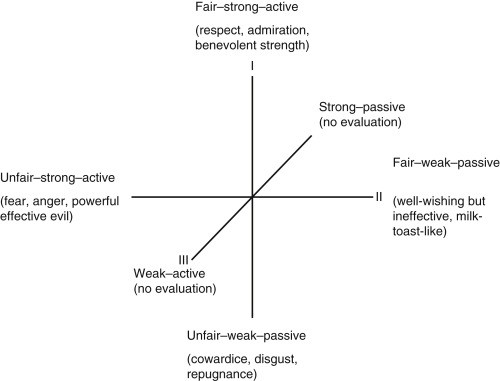
Each type of Semantic Differential Scale is designed to optimize the measurement of attitudes and perceptions for different research needs, ensuring that data collection is both relevant and sensitive to the subject matter. By selecting the appropriate variation, researchers can obtain meaningful insights into the complex world of human attitudes and perceptions.
Examples Of Semantic Differential Scale
Here are some real-life examples illustrating how these scales can be applied in different contexts:
1. Brand Perception
- Objective: To evaluate consumer perceptions of a brand.
- Adjective Pairs: Innovative - Outdated, Trustworthy - Unreliable, High Quality - Low Quality.
- Use: Marketing researchers can use these scales to understand how consumers perceive a brand, which can inform branding and positioning strategies.
2. Customer Satisfaction
- Objective: To measure customer satisfaction with a product or service.
- Adjective Pairs: Satisfied - Dissatisfied, Valuable - Worthless, Pleased - Annoyed.
- Use: Companies may apply these scales in post-purchase surveys to gauge customer satisfaction and identify areas for improvement.

3. User Experience (UX) Research
- Objective: To assess the user experience of a website or application.
- Adjective Pairs: User-Friendly - Confusing, Attractive - Unattractive, Innovative - Dated.
- Use: UX researchers can use these scales to evaluate how users feel about the design and functionality of a digital product, guiding future design decisions.
4. Employee Engagement
- Objective: To understand employee engagement - emplyee feelings towards their workplace.
- Adjective Pairs: Engaged - Disengaged, Motivated - Unmotivated, Valued - Undervalued.
- Use: HR departments can employ these scales in employee surveys to measure engagement levels and workplace satisfaction.
5. Educational Research
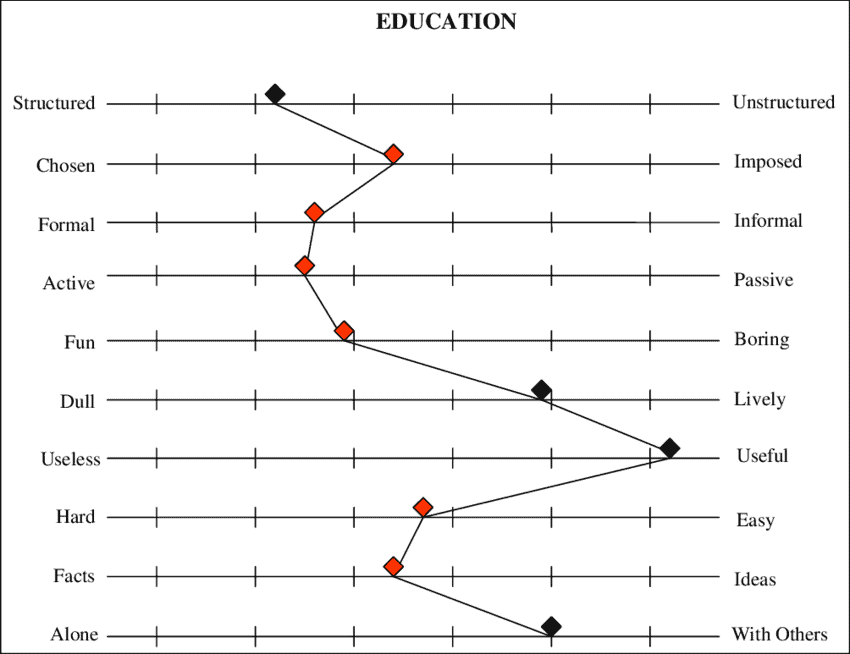
- Objective: To evaluate students' attitudes towards a course or teaching method.
- Adjective Pairs: Interesting - Boring, Informative - Uninformative, Inspiring - Discouraging.
- Use: Educators and researchers can assess the effectiveness of teaching methods or curricula and make necessary adjustments to improve student engagement and learning outcomes.
Enhancing Survey Insights with AhaSlides' Rating Scale
AhaSlides makes it easy to set up interactive rating scales for in-depth opinion and sentiment analysis. It enhances feedback collection with features for live polling and anytime online response gathering, perfect for a range of surveys including Likert scales and satisfaction assessments. Results are showcased in dynamic charts for comprehensive analysis.
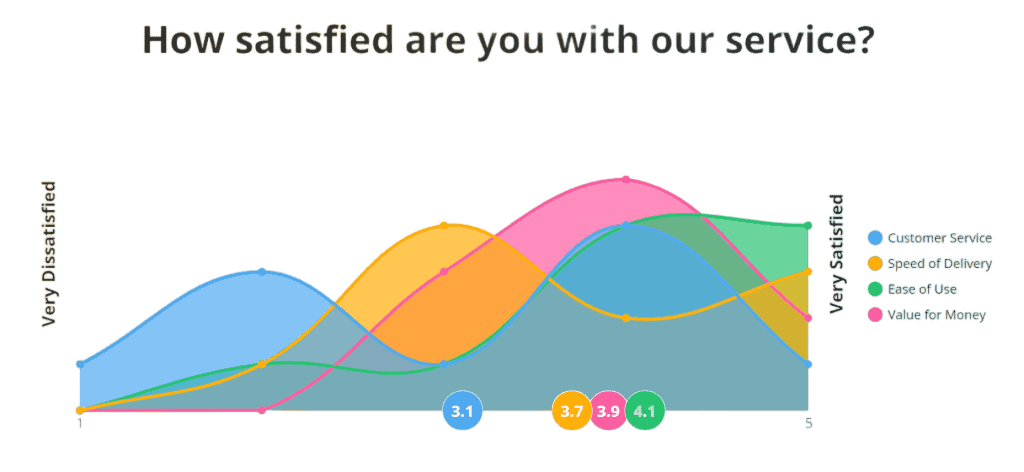
AhaSlides is constantly updating with new, interactive features for idea submission and voting, bolstering its toolkit. Together with the Rating Scale function, these updates provide educators, trainers, marketers, and event organizers with all they need to create more engaging and insightful presentations and surveys. Dive into our template library for inspiration!
Bottom Line
The Semantic Differential Scale stands as a powerful tool for gauging the nuanced perceptions and attitudes people hold toward various concepts, products, or ideas. By bridging the gap between qualitative nuances and quantitative data, it offers a structured approach to understanding the complex spectrum of human emotions and opinions. Whether in market research, psychology, or user experience studies, this scale provides invaluable insights that go beyond mere numbers, capturing the depth and richness of our subjective experiences.
Ref: Drive Research | QuestionPro | ScienceDirect



